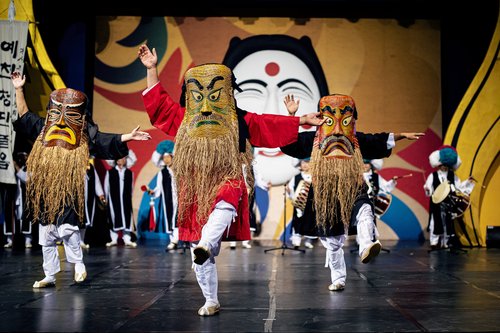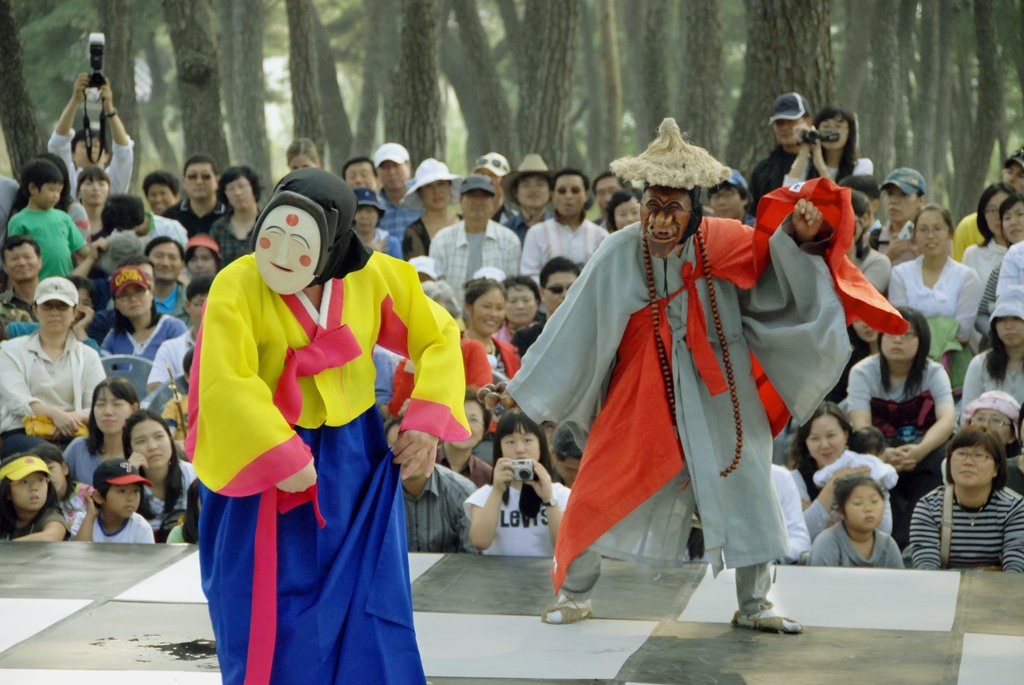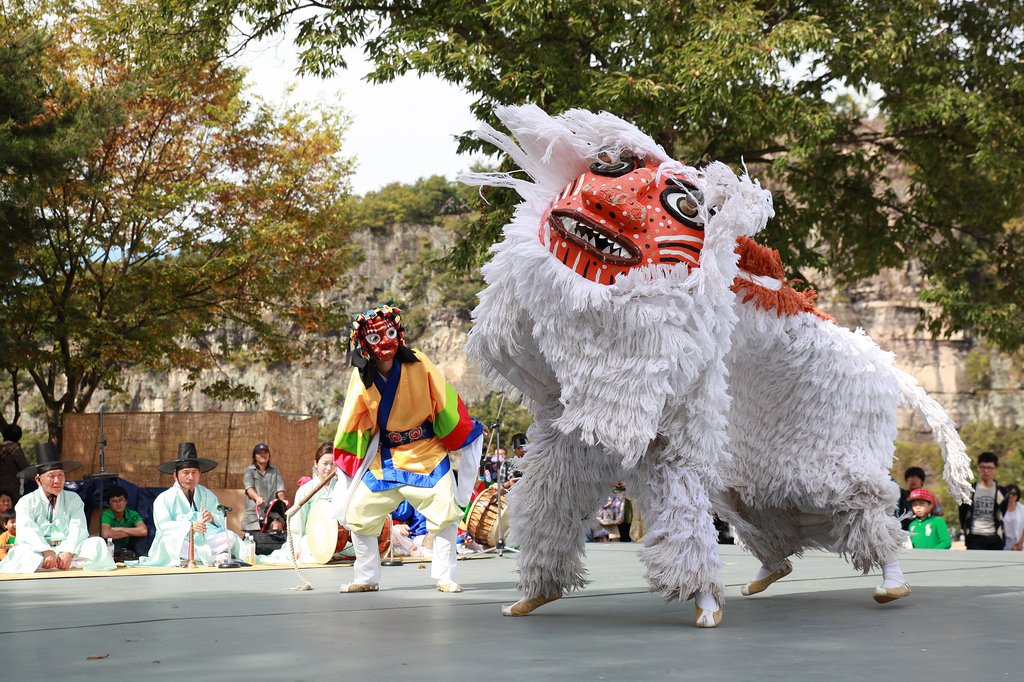- California Assembly OKs highest minimum wage in nation
- S. Korea unveils first graphic cigarette warnings
- US joins with South Korea, Japan in bid to deter North Korea
- LPGA golfer Chun In-gee finally back in action
- S. Korea won’t be top seed in final World Cup qualification round
- US men’s soccer misses 2nd straight Olympics
- US back on track in qualifying with 4-0 win over Guatemala
- High-intensity workout injuries spawn cottage industry
- CDC expands range of Zika mosquitoes into parts of Northeast
- Who knew? ‘The Walking Dead’ is helping families connect
Korean mask dance added to UNESCO’s Intangible Cultural Heritage list
The traditional Korean mask dance, or “talchum” in Korean, was inscribed onto a UNESCO Intangible Cultural Heritage list Wednesday.
UNESCO’s Intergovernmental Committee for the Safeguarding of the Intangible Cultural Heritage decided to put “Talchum, Mask Dance Drama in the Republic of Korea” on the Representative List of the Intangible Cultural Heritage of Humanity during its 17th session in Rabat, Morocco.
“The element is manifested through the oral traditions, performing arts, social practices and rituals of its dances, music and theater and the traditional craftsmanship of the masks,” the committee said after examining the nomination from South Korea.
It then stated Talchum’s message of universal equality and criticism of social hierarchy is still relevant today, praising its role as a symbol of respective cultural identities its variant forms represent.



This undated photo provided by the Cultural Heritage Administration shows dancers performing a traditional Korean mask dance. (PHOTO NOT FOR SALE) (Yonhap)
The addition was widely expected as the nominee went through a recommendation for inscription on the list from the committee’s evaluation body early this month. Recommendations for inscription are rarely reversed in a committee session.
Talchum is a performing art that encompasses dance, music and theater.
An ensemble of six or ten musicians accompanies masked performers who humorously explore social issues through dramatic combinations of songs, dances and movements and dialogue. The practice uses caricatures of everyday characters to convey its underlying appeal to universal equality and criticism of social hierarchy.
Scholars say the Korean dance differentiates itself from dance dramas of other countries in that it relies on humor and satire to depict social problems and moral contradictions and ends with a message of reconciliation. The genre involves two-way interaction, relying on the audience’s response, such as jeering and cheering, for the show to progress.
South Korea’s Cultural Heritage Administration explained in the document sent to UNESCO that such “focus on social criticism contributed to Talchum’s large-scale transmission in the 1970s and ’80s among young Koreans, particularly university students.”
Talchum has many different variations depending on regions. Currently, 13 regional versions, including those from Tongyeong, Yangju and the North Korean county of Pukchong, are classified as South Korea’s National Intangible Cultural Heritage.
Wednesday’s addition increased to 22 the number of South Korean entries on the UNESCO’s Intangible Cultural Heritage lists — the Representative List of the Intangible Cultural Heritage of Humanity and the List of Intangible Cultural Heritage in Need of Urgent Safeguarding. They include “ssireum,” or traditional Korean wrestling, which was inscribed on the Representative List in 2018 following joint efforts by South and North Korea.
In 2020, the Lantern Lighting Festival, or “Yeondeunghoe” in Korean, was added to the list. The festival is held every spring to celebrate Buddha’s Birthday.
Also among the new additions on the Representative List was the Pyongyang Raengmyeon custom submitted by the North.
Literally translated “cold noodles,” “raengmyeon,” or “naengmyeon” in South Korea, is a cold noodle dish of North Korean origin, which has thin, chewy noodles that are made with buckwheat and potato or sweet potato starch. The Pyongyang-style dish is known for its chilled beef broth that has a bland, savory flavor.
This brought to four the total number of North Korean entries on the UNESCO Intangible Cultural Heritage lists. The three others are a group of North Korean versions of the traditional Korean folk song “Arirang,” the tradition of making North Korean kimchi, and ssireum.












